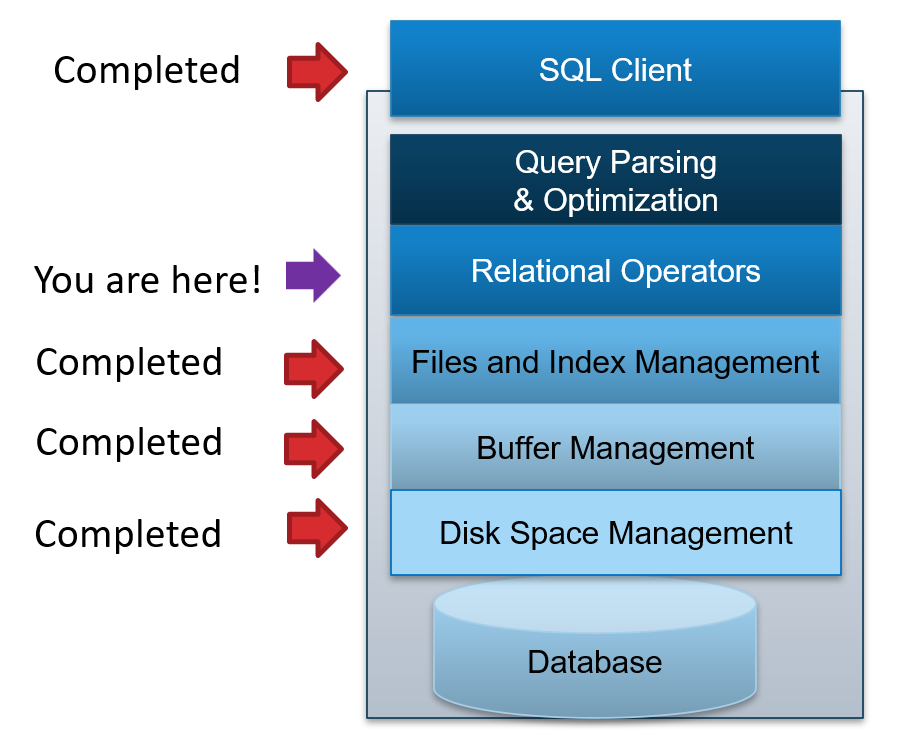
Introduction
- SQL is a declarative programming language.
- Relational Algebra is a more expressive language, a procedural programming language
- meaning the query specifies exactly what operators to use and in what order
- Relation are sets of tuples (does not allow replication)
All of the operations in relational algebra take in a relation and output a relation.
Projection
means SELECT name FROM dogs
The input parameters specify which tables to pull (like FROM key word)
Selection
Selection is used to filter rows, equivalent to SQL’s WHERE clause.
Both
and
are equivalent to
SELECT name, age FROM dogs WHERE age = 12 AND name='Timmy';Union
Same as SQL’s UNION. For example:
When union fails
- union 2-column-relation with 1-column-relation (columns number not match)
- union string column with int column (columns type not match)
Set Difference
Same as SQL’s EXCEPT,
Intersection
Same as SQL’s INTERSECT operator,
Cross Product
Perform a Cartesian product like the same in SQL.
Joins
Put join condition in the subscript and put right operator on the right side.
- Theta Join : inner join. The refers to the join condition.
- Natural join
- Example:
- This is a natural join, so to simplify:
Derived from cross product
Theta joins and natural joins are derived from cross product and conjunction of selections For example:
can be rewritten as
and natural join can be rewritten as
Rename
The rename operator essentially accomplishes the same thing as aliasing in SQL.
: Renames the dogs relation’s name column to first, so there’s no conflict in column names.
Group By / Aggregation
SELECT age, SUM(weight) FROM dogs GROUP BY age HAVING COUNT(*) > 5;
can be expressed as: